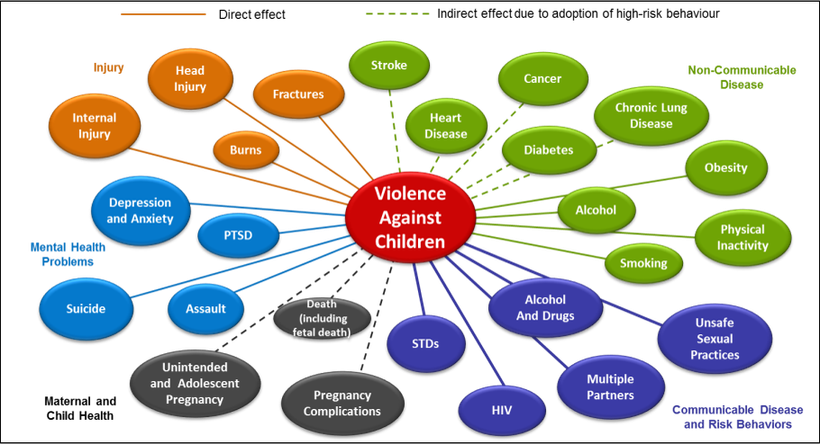* Any views expressed in this article are those of the author and not of Thomson Reuters Foundation.
The images from the recent gas attack in Syria, where over 80 people, including babies in diapers, can be seen painfully gasping for air before dying, are heartbreaking. These are a graphic illustration of our collective failure to protect children from cruel and inhuman treatment.
President Donald Trump correctly called it an “affront to humanity”.
The United Nations Secretary General, Mr Antonio Guterres has described Syria as one of the worst conflicts of our time. But what happened in Syria was not a one-off. Everyday millions of children around the world are caught up in crises and disasters, many of man’s own making.
We recently attended the Dubai International Humanitarian Aid & Development Conference & Exhibition 2017 under the patronage of the United Arab Emirates from March 21 to 23. This year’s focus was on the impact on children affected by conflicts and disasters.
Some of the information at the event was startling.
Consider this. In 2016 alone, one billion children around the world experienced physical, sexual or psychological violence. Globally, one in four children suffer physical abuse, one in five girls are sexually abused at least once in their lifetime, and more than 240 million children live in countries affected by conflict.
In a report by UNICEF’s report Hidden in Plain Sight, certain conflicts have been associated with large-scale incidents of sexual violence. Reports from the Democratic Republic of the Congo on the extent of conflict related sexual violence range from 18 per cent to 40 per cent among girls and women and 4 per cent to 24 per cent among boys and men, depending on the approach used to gather the data. The rate of psychological aggression is highest in Yemen, where it exceeds 90 per cent.
A growing numbers of boys and girls, some as young as eight years, are being abducted and sent to the frontlines as child soldiers, or fall prey to sexual violence in times of war. These experiences sear their psyches with macabre memories and condemn them to a terrifying hopeless future.
It is difficult to find another species that treats its offspring with such cruelty.
Wars devastate the most vulnerable of any society. Children face disruptions to their access to health, education and basic services, and fear becomes a part of their daily lives.
When conflicts end and peace agreements are signed, too often bricks and mortar become the focus while society disregards the trauma borne by children exposed to extreme violence.
But long after the shooting stops, the psychological symptoms endure: loss of trust, nightmares, and aggressive /regressive behaviour.
Research has found that conflict causes more mortality and disability than any major disease in the modern world. Alongside injury, depression, anxiety, suicide and death, the less-recognised consequences include increased communicable and non-communicable diseases such as HIV/AIDS, heart disease and hypertension.
Violence against children must receive greater global attention, not only in areas of conflict but violence at home as well. Boys who grow up in homes with abuse and domestic violence are more likely to perpetrate domestic violence in adulthood.
The rapid spread of communication technologies, including the internet, has resulted in many more ways in which children are violated and victimised, and increased the number of children whose suffering goes unreported.
Target 16.2 of the Sustainable Development Goals (SDGs) calls on governments to end abuse, exploitation, trafficking, torture and all forms of violence against children.
The inclusion of that target in the SDGs is an acknowledgement that violence against children diminishes humanity. Values must be the guiding principle when it comes to the safety, security and wellbeing of the world’s children, not realpolitik.
That is why ten international agencies (including UNICEF, the World Health Organization, the UN Office for Drugs and Crime Control, the US Centres for Disease Control and the World Bank) have come together to create INSPIRE, a group of seven strategies distilled from the best available evidence.
The seven strategies are: implementation and enforcement of laws; norms and values; safe environments; parent and caregiver support; income and economic strengthening; response and support services; and education and life skills and INSPIRE’s vision is a world where all governments, with the strong participation of civil society and communities, routinely implement and monitor interventions to prevent and respond to violence against all children and adolescents, and help them reach their full potential.
As Nelson Mandela once said, “There can be no keener revelation of a society’s soul than the way in which it treats its children”.
As long as the global community dithers in taking comprehensive preventive steps, our collective prosperity will remain compromised and our humanity in jeopardy.
Siddharth Chatterjee is the United Nations Resident Coordinator to Kenya and Sabine Rakotomalala is Senior Adviser with the Global Partnership to End Violence Against Children in WHO, Geneva.



